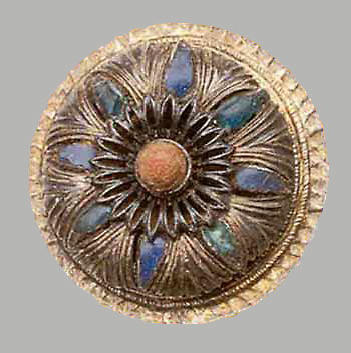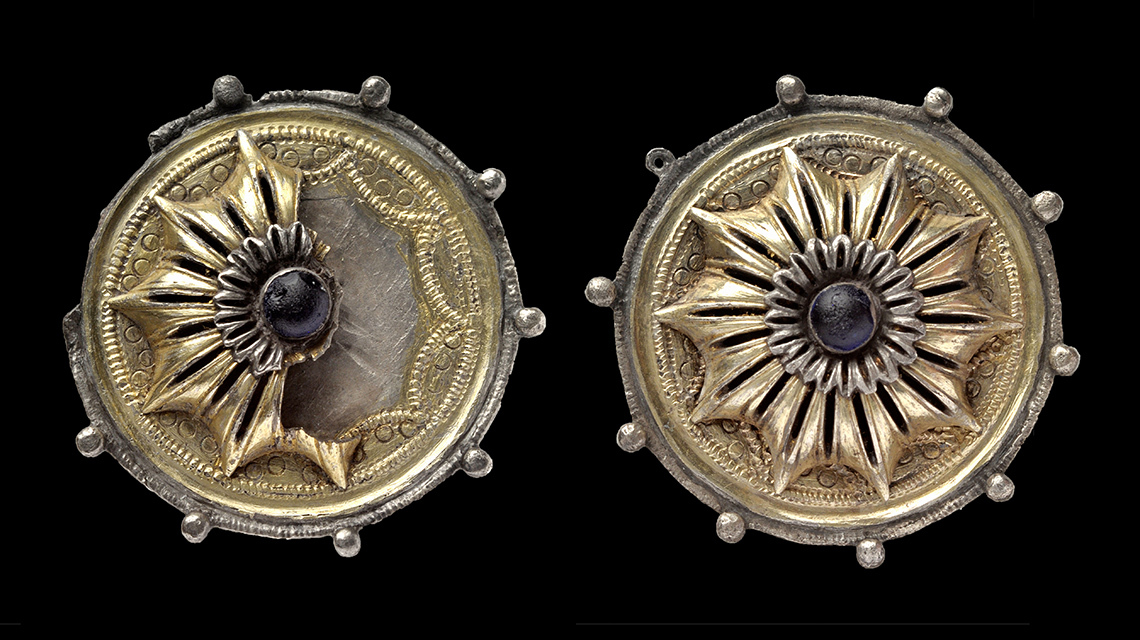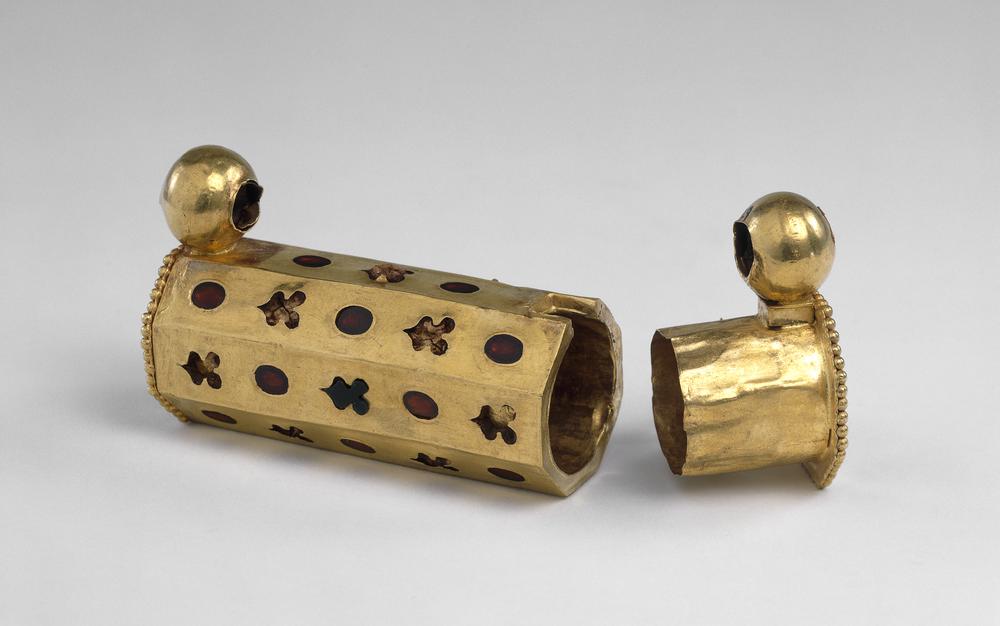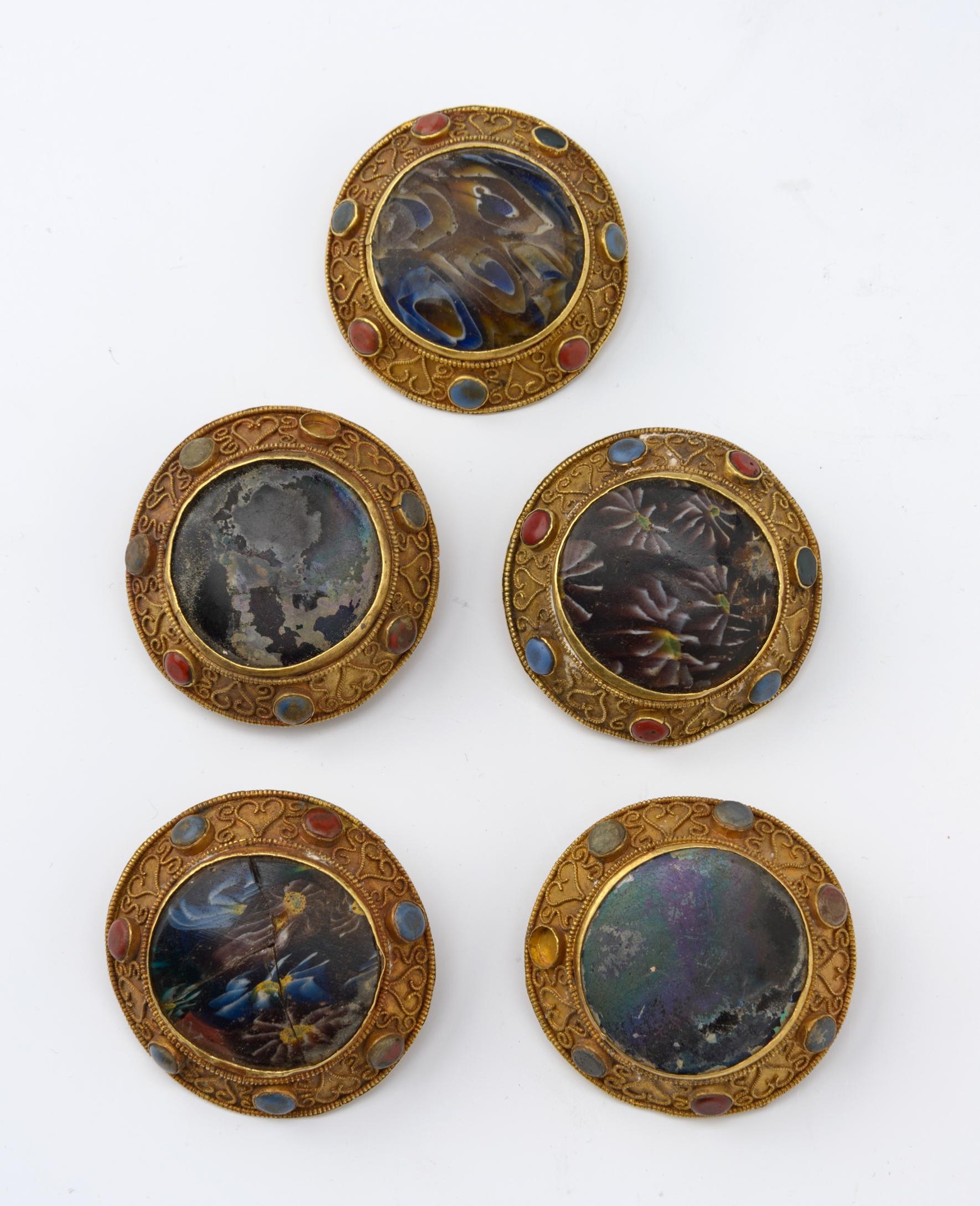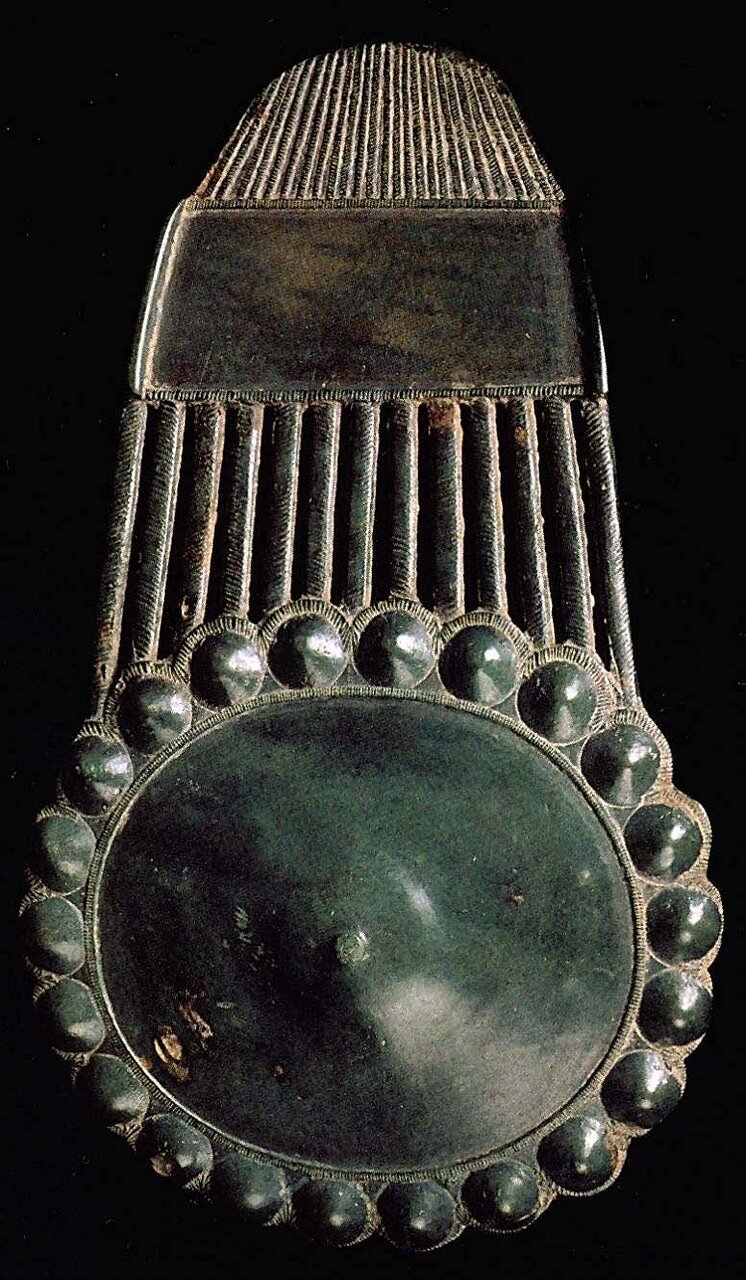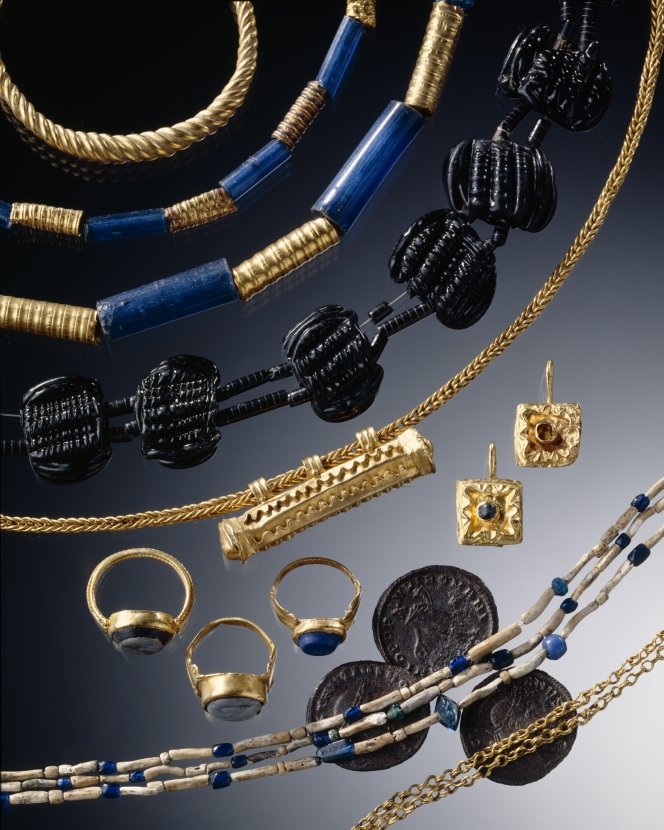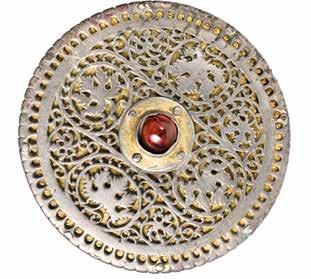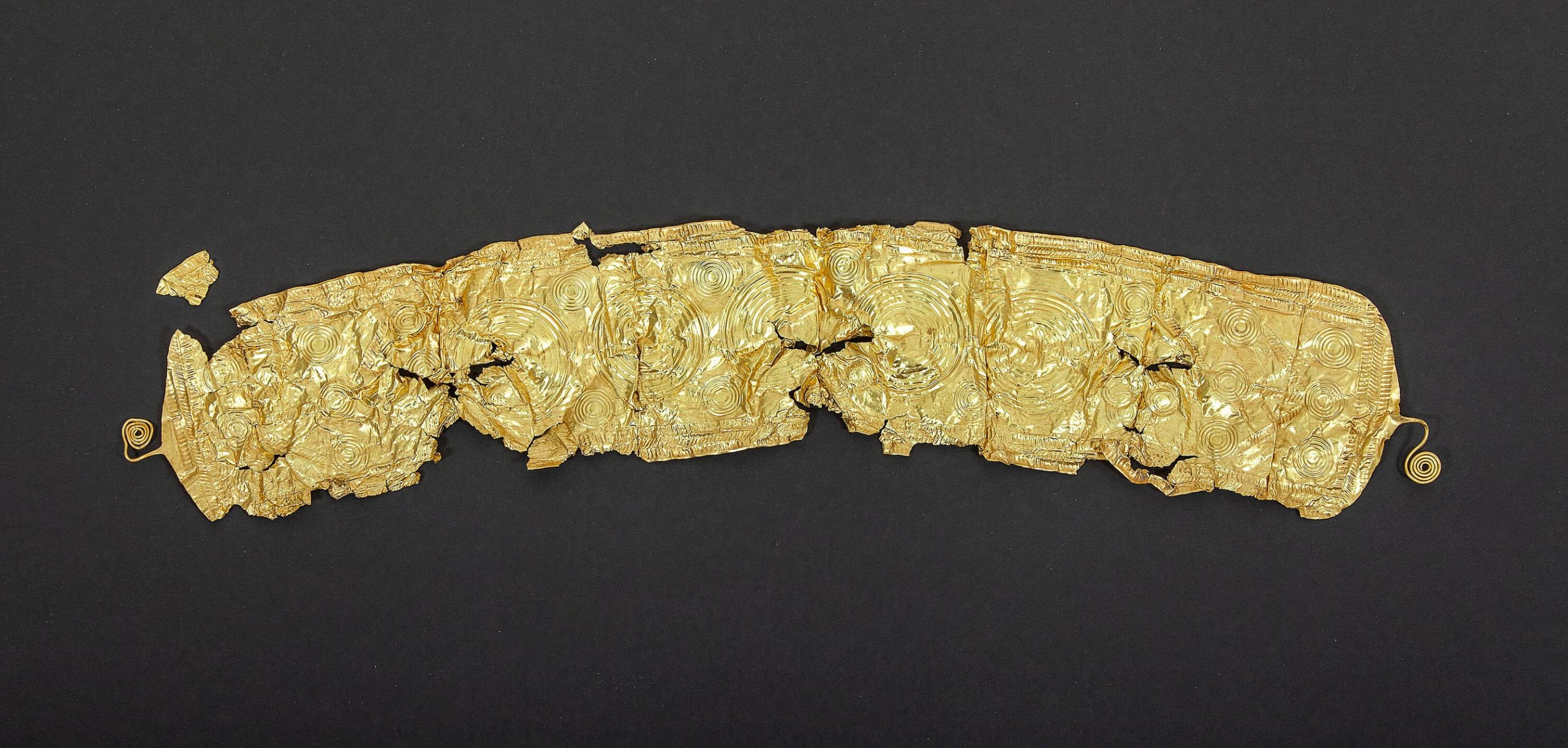

ИНВЕНТАР ГРОБНИЦА ИЗ ДОЛА КОД БЕЛЕ ПАЛАНКЕ (REMESIANA), Ivana Popović
[INVENTORY OF TOMBS FROM DOL NEAR BELA PALANKA]
NIŠ & BYZANTIUM VII. SYMPOSIUM , NIŠ 3-5. June 2008
[Remesiana, ancient Roman city in Serbia]
“(…) an unusual way of wearing a medallion with a chain, which was not hung directly on a necklace worn around the neck, but on a shorter articulated chain ended with a hook (Fig. 3), which probably connected it to the upper chain, part of which is seven articles, found in the same tomb, and lost today. The chain on the cameo is composed of 17 double forged loops, which encircled each other, which is a weave known from the La Tène period, and was also used in Roman local centers. Since his length is 155 mm, the medallion with the cameo could be attached to dress under the breast using a triple thread of ribbon or chain, which are passed through three holes in the side edges of the back of the medallion cassette. He had another medallion with a cameo on the vertical edges of the back cassettes with two holes for threading, to which it was attached for the fabric, so that both cameos formed a unique decorative system, which can be seen as the antithesis of lavish belts that were worn by high-ranking women under the breasts. These belts, with the central medallion in the middle, although already known in the 2nd-3rd century in the eastern Mediterranean basin, from the second half of the 4th and in the 5th century they became status landmarks a high-ranking woman, which is well seen in the representation of women from the church Santa Maria Maggiore in Rome, depiction of Serena from the famous Stilhon diptychs of ivory from Monza and on other monuments.
Judging by the luxury jewelry with cameos, on which it is most likely shown Empress Fausta, the female person buried in this tomb was in Constantine’s time high on the social ladder. Unfortunately, except of these ornaments for clothes, there is no precise information about her other jewelry, and, if all the ornaments belong the same funeral, it is about earrings with blue stone, three bracelets and two rings. However, chronologically heterogeneous numismatic material from this tomb suggests existence at least two funerals, throwing a new one light on possible grave inventory each of them.” [4th-5th century]

